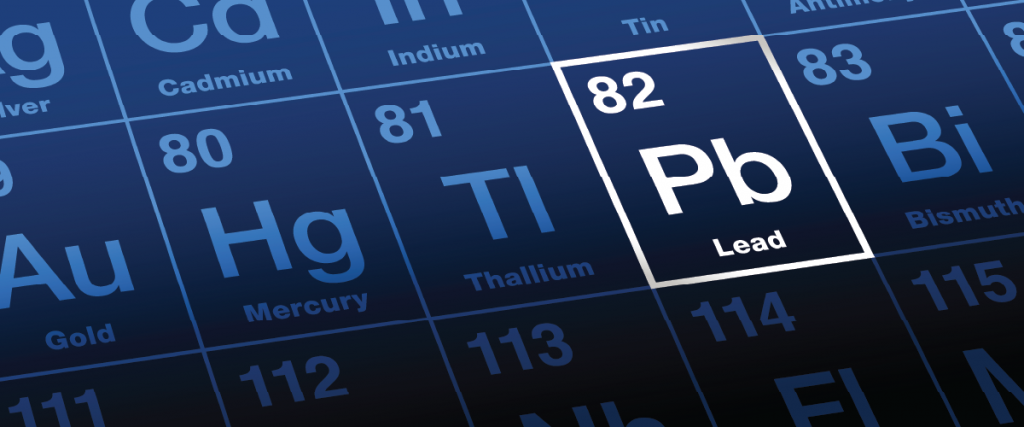Lead Poisoning Prevention: Be Aware of the Dangers and Health Impacts of Lead Exposure

Why is lead poisoning a concern?
There is no known safe level of lead in the body. Lead exposure can cause negative health effects. Children are especially at risk because their bodies absorb more lead than adults and their nervous system, including the brain, is not fully developed.
Lead is a naturally occurring metal in our environment. Exposure often goes unnoticed because people may have no symptoms and appear healthy. Lead can enter the bloodstream through breathing or swallowing. Children’s brains and nervous systems are more sensitive to the damaging effects of lead and exposure can result in difficulty learning, behavioral and hearing problems, slowed growth, and headaches. Even low levels of lead in blood can cause developmental delays.
Where can a child be exposed to lead?
Lead can be found in the home, air, soil, and water; all the places children live, learn, and play. The most common exposures include:
- Lead-based paint. Homes built before 1978 may have lead paint. Deteriorated surfaces with lead-based paint, such as peeling, chipping, or cracking, can create dust that contains lead.
- Lead contamination from clothing. Contamination of the home can occur from clothing worn by adults who work in mining, auto mechanics, and construction industries. Clothing worn during recreational activities in locations containing lead can also bring lead into a home.
- Lead in drinking water. If your home was built before 1986, it may have lead pipes, fixtures, and solder. Lead can enter drinking water when service pipes that contain lead corrode.
- Lead in soil. The soil in yards or playgrounds can contain lead from different sources, including when exterior lead-based paint flakes or peels onto the ground. The use of leaded gasoline in cars or industrial sources, such as former lead smelters, or mines, can be sources of soil contamination.
- Lead used in jobs and hobbies. Welding, auto or boat repair, making ceramics or stained glass, target shooting at firing ranges, furniture refinishing, and home remodeling are jobs and hobbies that may expose you to lead. People may bring lead dust into their car or home on their clothes and body.
- Lead in products. Lead may be found in certain foods, cosmetics, and traditional medicines imported or purchased in other countries. You cannot tell if a product contains lead by looking at it or tasting it.
- Lead at old mining sites. Historical mine sites can have high levels of lead and other metals in waste rock, tailing piles, soil, water, and historical buildings.
What are steps I can take to protect my child from lead?
Work with your doctor.
- Lead exposure often has no obvious symptoms and can go unrecognized. Testing is the only way to know if your child has lead in their body. If you have never had your child tested, or think your child has been exposed to lead, contact your doctor to arrange a simple blood test.
- Be sure to follow up! If your child has an elevated blood lead level, work with your doctor for information on how to lower it. Follow-up testing should be scheduled until the level of lead in the blood is no longer a concern.
Find the source of the lead exposure.
- Find and remove sources of lead from the environment before a child is exposed. This is one of the most important things that can be done.
- For more information on sources of lead, visit the Centers for Disease Control and Prevention Childhood Lead Poisoning Prevention website and the Idaho Environmental Health Childhood Lead Prevention website.
Reduce lead exposure.
- Repair deteriorating surfaces containing lead-based paint that are peeling, chipping, and cracking. This repair should be done immediately by an EPA-certified contactor. Home repairs such as sanding or scraping paint can create lead dust and should be done by an EPA-certified contractor.
- WASH your hands often! Everyone should wash their hands before eating and sleeping, especially after playing outside. Lead dust is so small you cannot see it. Children can get lead poisoning from swallowing dust on their hands and toys.Keep lead-associated hobbies separate from living space. If you have hobbies that involve lead, such as bullet reloading, fishing, or antiquing, prevent the build-up of lead dust by regularly cleaning your work area and keeping your hobby separate from your living space.Remove shoes and dirty clothing before entering your home, especially if you have a job that includes welding, auto or boat repair, making ceramics, stained glass, target shooting at firing ranges, furniture refinishing, and home remodeling.Clean play areas, toys, and the toy containers often. If toys come from outside, clean them before bringing them inside.Lead may be found in the paint, metal, and plastic parts of toys and toy jewelry, particularly those made in other countries, as well as antique toys and collectibles. Check the Consumer Product Safety Commission (CPSC) website or call 1-800-638-2272 to be sure your child’s toys are safe.
- Lead can be found in foods, cosmetics, and medicines from other counties. Pregnant women and children should avoid use of any product that may contain lead. More information can be found here.
Feed your child healthy foods.
- Foods that contain calcium, iron, and vitamin C may help keep lead from building up in the body.
- Calcium is in milk, yogurt, cheese, and green leafy vegetables like spinach.
- Iron is in red meats, beans, peanut butter and cereals.
- Vitamin C is in oranges, green and red peppers, and juice.
For additional information
 Official Government Website
Official Government Website